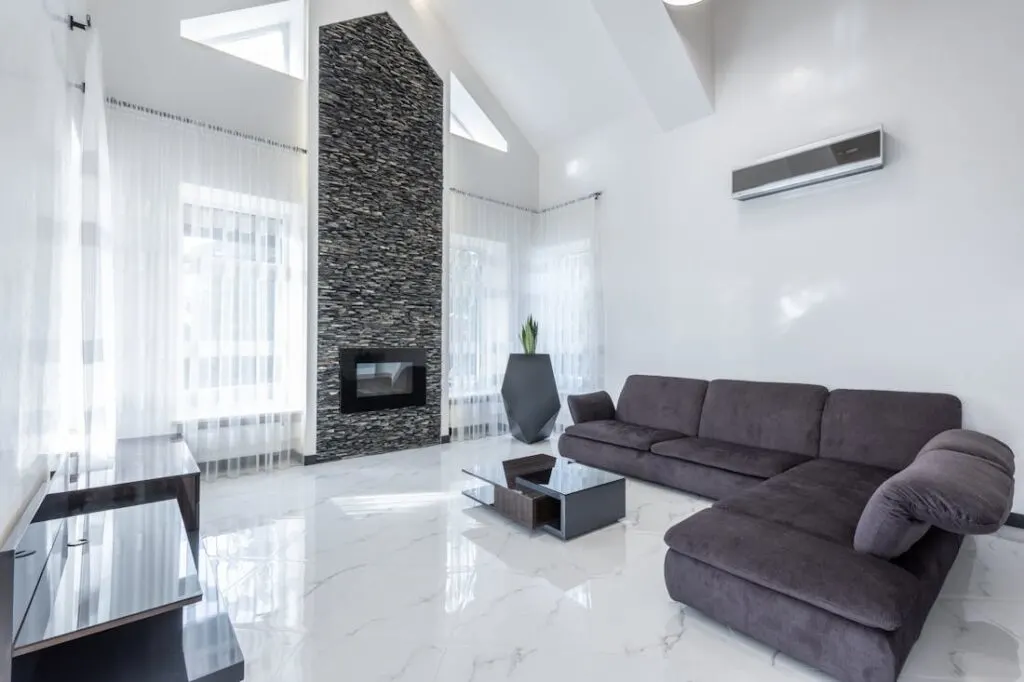This post may contain affiliate links. I only recommend products I use and love. Read the full disclosure here
Last Updated on April 3, 2024 by Alaina
Home heating and cooling systems have a surprisingly rich history tracing ancient civilizations. Whether designing buildings with thick adobe walls to keep the desert’s scorching heat at bay or utilizing underfloor systems to distribute warm air in colder climates, our ancestors knew that ambient temperature was crucial for survival and comfort.

With the arrival of the industrial era, these systems transcended from mere survival tools into sophisticated machines designed to create ideal living conditions.
Advancements in Heating Systems Through History
The traditional household fireplace, once a central gathering spot for families, began to decline in popularity with the rise of more efficient central heating systems. Cast iron stoves emerged as a superior alternative, offering enhanced heat distribution throughout the living area. This shift coincided with the increasing demand for whole house humidifiers.
As the luxury of electricity became a standard utility, home heating saw a refreshing change—electric heaters simplified temperature control, and homes began to feel the warmth without the soot and maintenance of traditional stoves or fireplaces.
The Cool Side of Home Heating and Cooling: Air Conditioning Breakthroughs
Opposite the spectrum, the quest for coolness has seen just as much invention and progress. Willis Carrier’s invention in the early 20th century was not just about comfort but also about controlling humidity—hence the term “air conditioning.”
This ground-breaking invention created new opportunities for comfort throughout the sweltering summer months. Air conditioning units started to shrink in size, becoming more practical for residential use, and eventually became a standard feature in homes and vehicles alike.
Contemporary Trends in Heating and Cooling
Proponents of energy-efficient living now herald programmable thermostats as a significant advance in home HVAC systems. By pre-setting temperature preferences for different times of the day, these devices help avoid energy waste associated with heating or cooling unoccupied homes. According to Energy.gov, properly using programmable thermostats can save the average household around $180 annually in energy costs.
Impacting the Environment: Heating and Cooling’s Ecological Footprint
The complicated relationship between indoor climate control and environmental health can no longer be understated. Air conditioning, heating, and ventilation systems use a considerable portion of total energy expenditure in homes, raising concerns about their ecological effects. Awareness is growing, and consumer demand for HVAC solutions that support sustainability without compromising comfort is growing.
Incorporating Renewable Energy into HVAC Systems
Incorporating renewable energy sources into the HVAC industry is a testament to the progress toward greener living. Innovations in solar power technology, for example, have enabled the integration of photovoltaic cells directly with home heating and cooling systems, slashing electricity bills and dipping into an inexhaustible well of energy. As geothermal heating and cooling systems become more accessible, they, too, offer a glimpse into a future where homes are climate-controlled by the very earth they rest upon.

The Future of Home Climate Control
Peering into the crystal ball of home heating and cooling systems and home climate control reveals a horizon brimming with potential. Technological strides are forecasted to bring networked devices that learn from our habits and adjust to our preferences, a concept embraced by the smart home revolution.
As described by experts in a Harvard Business Review article, the integration of AI and IoT in HVAC systems is expected to drive advancements in personalized comfort, unprecedented energy efficiency, and predictive maintenance—all while lowering the carbon footprint of our dwellings.
